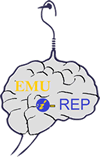JavaScript is disabled for your browser. Some features of this site may not work without it.
| dc.contributor.advisor | Dinçyürek, Özgür (Supervisor) | |
| dc.contributor.advisor | Polay, Mukaddes (Co-Supervisor) | |
| dc.contributor.author | Özer, Kerem Cemil | |
| dc.date.accessioned | 2024-10-11T06:17:43Z | |
| dc.date.available | 2024-10-11T06:17:43Z | |
| dc.date.issued | 2019-01 | |
| dc.date.submitted | 2019-01 | |
| dc.identifier.citation | Özer, Kerem Cemil. (2019).Interrogation of the Islamic Influences on Physical Environment of Neighborhoods in Traditional Urban Texture of Antakya. Thesis (M.S.), Eastern Mediterranean University, Institute of Graduate Studies and Research, Dept. of Architecture, Famagusta: North Cyprus. | en_US |
| dc.identifier.uri | http://hdl.handle.net/11129/6182 | |
| dc.description | Master of Science in Urban Design. Institute of Graduate Studies and Research. Thesis (M.S.) - Eastern Mediterranean University, Faculty of Architecture, Dept. of Architecture, 2019. CO-Supervisor: Prof. Dr. Mukaddes Polay and Supervisor: Prof. Dr. Özgür Dinçyürek. | en_US |
| dc.description.abstract | Since its emergence in the 7th century, Islamic religion has influenced the urban texture and architectural language of many cities around the world through socio cultural and political influences it exerted on societies. This study aims to look at how Islamic city is identified by various researches in the literature and how it affected the development of Antakya city which had long lived under Islamic rule. Within this framework, a research will be carried out in various neighborhoods of Antakya composed of different religious and ethnic groups. In the second part of the study, the Islamic city and its history, the Islamic city model, the criticisms made in this model, and then the features of the Islamic city and physical characteristics of the cities are examined. Thus, certain physical characteristics of the city have been determined by developing various parameters. In the third chapter, information about the history, demographic structure and neighborhoods of Antakya, which are important for the content of the study, are included. In the light of this information, the effects of the characteristics of the Islamic city on the architectural and physical structure of these regions are examined. These features include street configurations, cul-de-sacs, courtyard houses, space organizations and their use/ functional analysis, and home and house privacy arrangements. In the fourth section, as a result of the investigations, the findings are brought together and discussed. In the last chapter, the results of the findings and discussion are put forward. | en_US |
| dc.description.abstract | ÖZ: 7. yüzyılda ortaya çıkışından bu yana, İslam dini, dünyadaki birçok şehrin kentsel dokusunu ve mimari dilini, toplumlara uyguladığı sosyo-kültürel ve politik etkiler yoluyla etkilemiştir. Bu çalışmada öncelikle, farklı araştırmacılar tarafından geliştirilen, İslam kent modeli ve çeşitli fiziksel özellikleri incelenip, İslam yönetimi altında uzun dönemler geçirmiş olan Antakya kenti örneğinde etkileri araştırılacaktır. Bu araştırma, kent merkezini oluşturan, farklı dini ve etnik grupların oluşturduğu mahalleler üzerinde yapılacaktır. Çalışmanın ikinci bölümünde, İslam kenti ve tarihi sonrası, İslam kenti ile ilgili araştırmalar üzerinden geliştirilen İslam kent modeli ve bu modele yapılmış eleştirilere yer verilmiştir. Sonrasında İslam kentine ait özellikler olarak belirtilen ve kentlerin fiziksel özellikleri üzerine yapılan çeşitli belirleyici özellikler incelenmiştir. Bu incelemelerden faydalanılarak, çeşitli parametreler geliştirilmiş ve kente dair belirli fiziksel özellikler belirlenmiştir. Üçüncü bölümde ise, Antakya’nın çalışmanın içeriği açısından önem arz eden, tarihi, demografik yapısı ve mahalleleriyle ilgili bilgilere yer verilmiştir. Son olarak ortaya konan bu bilgiler ışığında belirlenen çeşitli mahalleler üzerinde, İslam kentine ait özelliklerin bu bölgelerin mimari ve fiziksel yapısına ne ölçüde etki ettiği ve olası farklılıkları incelenmiştir. Bu özellikler; sokak dokusu, çıkmaz sokaklar, avlulu evler, mekansal organizasyonlar, mekan kullanımları / fonksiyonel analizler, ev ve evlerin mahremiyet ile ilgili yaptıkları düzenlemeleri içermektedir. Dördüncü bölümde, Antakya'da seçilen mahallelerde, sokaklarda ve evlerde yapılan incelemeler sonucunda bulgular bir araya getirilmiş ve tartışılmıştır. Son bölümde ise, bulgular ve tartışma sonuçları yorumlanmıştır. | en_US |
| dc.language.iso | eng | en_US |
| dc.publisher | Eastern Mediterranean University (EMU) - Doğu Akdeniz Üniversitesi (DAÜ) | en_US |
| dc.rights | info:eu-repo/semantics/openAccess | en_US |
| dc.subject | Architecture Department | en_US |
| dc.subject | Traditional Houses--Traditional Architecture--Antakya (Turkey) Vernacular architecture--Antakya (Turkey) | en_US |
| dc.subject | Antakya, Islamic City, urban texture, neighborhoods, courtyard housesAdded | en_US |
| dc.title | Interrogation of the Islamic Influences on Physical Environment of Neighborhoods in Traditional Urban Texture of Antakya | en_US |
| dc.type | masterThesis | en_US |
| dc.contributor.department | Eastern Mediterranean University, Faculty of Architecture, Dept. of Architecture | en_US |









